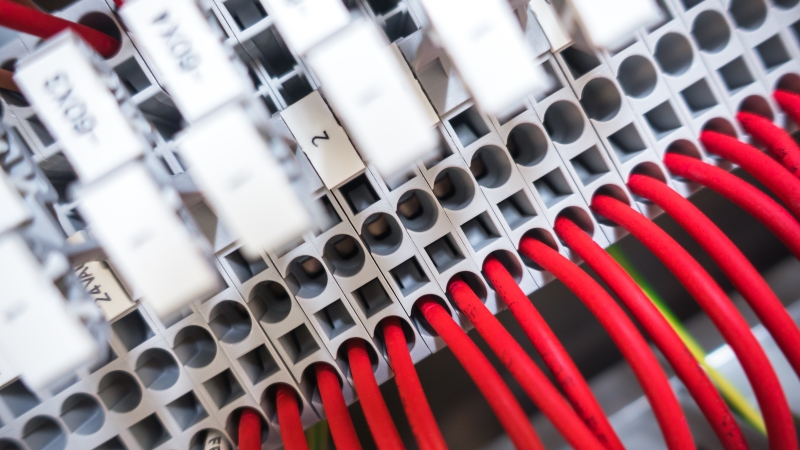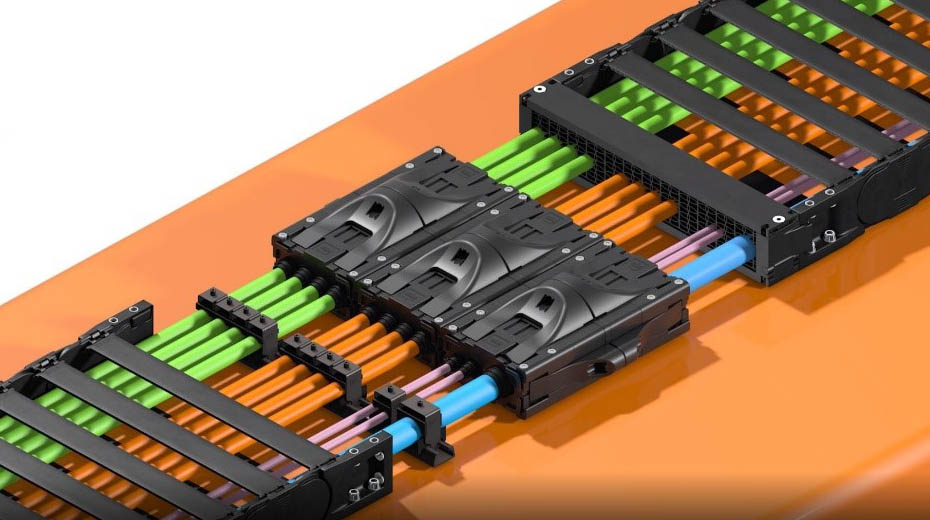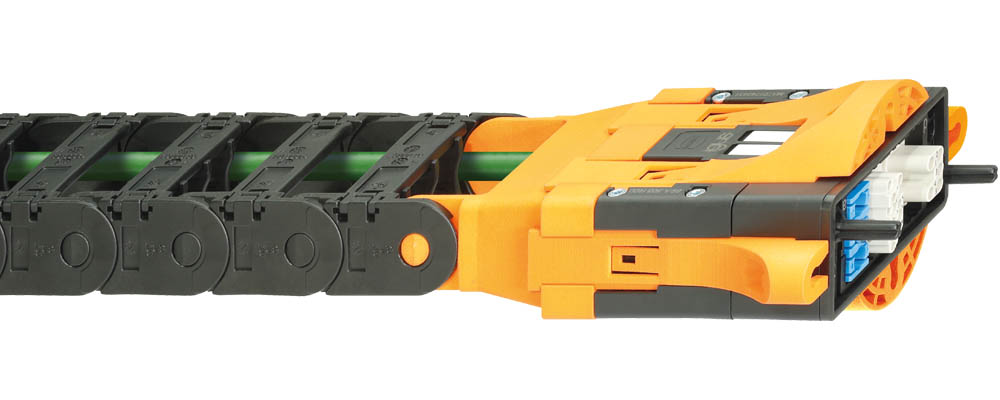How to make energy supply systems ready to plug and play
Markus Hueffel | 7. April 2020
Surely you are familiar with classical energy supply systems. Each cable has a plug-in connector at each end. Hydraulic hoses have fittings at both sides, and pneumatic hoses have hose connectors.
Let’s stick with electrical cables for a moment. Each cable must be plugged into a system with a single plug-in connector to ensure reliable function.
If the cables are harnessed with such elements as ring terminals or wire end sleeves instead of connectors, these cable ends must be connected directly. This is achieved with connecting equipment such as terminal blocks or screw connections. During the course of system installation, individual interfaces are frequently connected and disconnected. As installation proceeds, the system is continuously expanded with individual components. The machine’s interfaces are often difficult to access. This makes it difficult to plug and unplug the connection.

When the machine is completely installed in a plant for the first time, the system is put through a test run. Once this run is completed successfully, the machine is dismantled into individual assemblies and delivered to the final customer’s construction site. This means that all plug-in points must be opened again and connected before commissioning at the final customer’s premises.
Connections that, like those mentioned above, are connected directly via control cabinet terminals, earth rails, or terminal boards are painstakingly disconnected, labelled and packaged for transport. Unfortunately, it is possible that the cable ends are not labelled with sufficient care or not labelled at all, or the labelling is illegible. The experience at construction sites is also often that the labels that were so carefully filled out and affixed have come off.
During commissioning at the end customer’s premises, when the system is set up and configured, unlabelled cable ends are the source of great potential for errors. Even though it is electricians who connect cable cores in the switch box, several hundred cores (depending on the machine’s scope of function) must be connected individually. This requires the right documentation, expertise, concentration, and, most of all, time – and time is scarce during commissioning.
Many functions mean many interfaces?
The more complex the system, the more extensive the functions of the machine, and the more effort and cost often associated with the energy chain. For this reason, complex systems often require many plug-in points that must be produced and coded according to polarisation. Additional connector coding in such forms as bolts, guide pins, notches, or keyways provides hardware protection to connectors of the same design, preventing connectors from being confused and incorrectly connecting by making it impossible to connect to each other.
If we consider the energy supply unit, completely configured and equipped with cables, as an assembly, the goal is to design the entire assembly to be ready to plug and play, so as to greatly simplify its handling.

Many functions, ONE interface
We at igus have been working on how to make a complete readychain ready to plug and play on a machine according to the unique Module Connect interface concept. The ideal solution is the Module Connect adapter.
An adapter is used to connect the Module Connect directly to the energy chain, giving the entire readychain system a large, defined interface. This makes the assembly easy to handle even during the installation phase. The harnessed energy supply system is delivered just in time and installed where the system is set up.

The interface is designed to be polarised and can be plugged flawlessly even under adverse ambient conditions such as poor light or tight installation space. The adapter directly links the interface and the energy chain. Depending on use and system parameters, no further provisions for fixing need to be made. The primary advantage is the time saved.
When it is time for servicing, the assembly can be unplugged and disconnected from the system and a new, identically harnessed assembly replaced in just a few simple steps. Downtime and stoppage time are therefore minimised. The clearly structured interface enables any service staff member to plug in the interface correctly without prior familiarisation with the system or system documentation.

